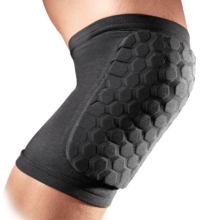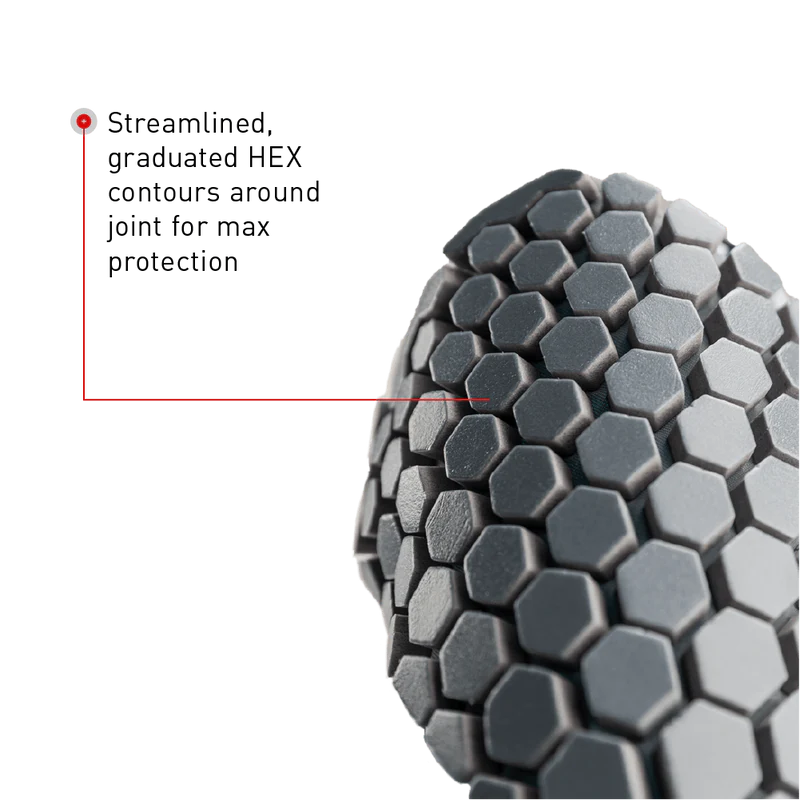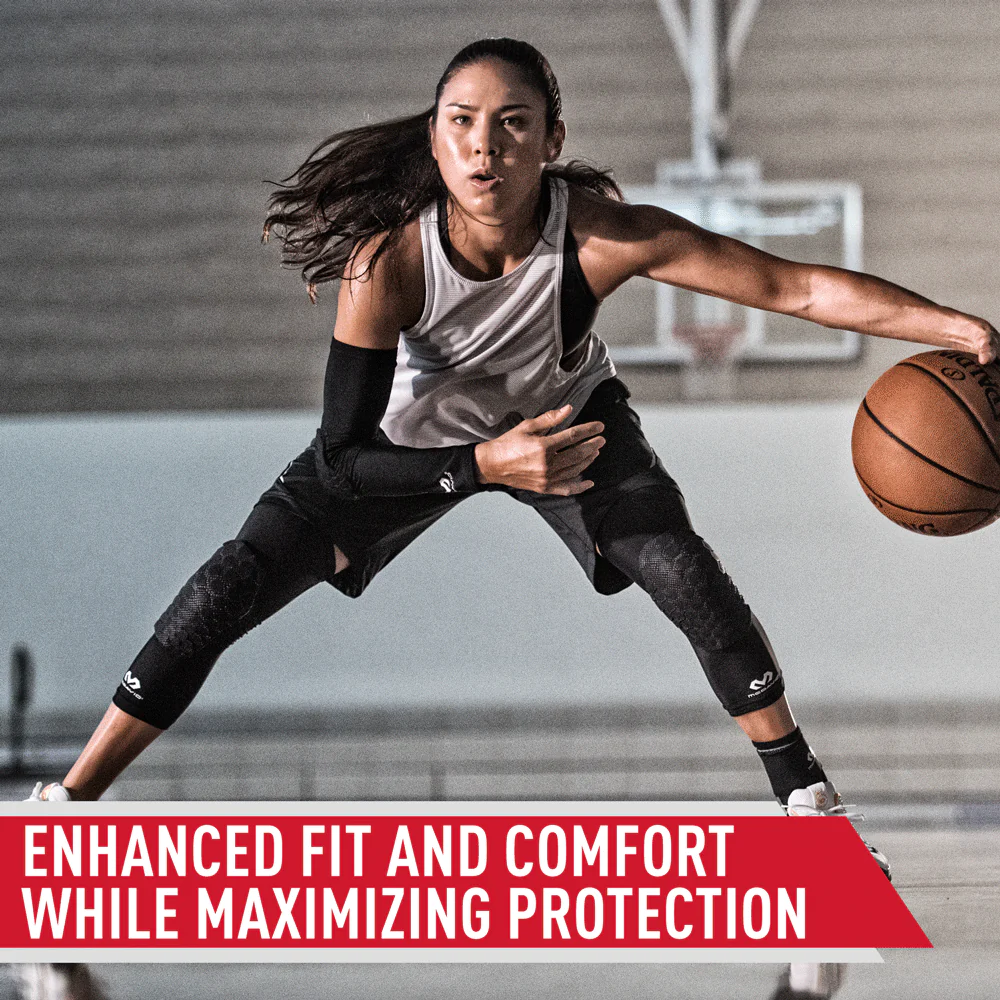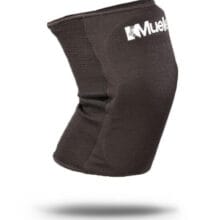HEX / Knee / Elbow / Shin Pads / Pair
Login For Dealer Pricing
A highly versatile pair of pads that uses McDavid’s 9mm HEX technology and can be worn on the knees, elbows and shins to prevent turf burn or other similar injuries due to chafing.

Knee pads are protective padding devices that are designed to safeguard against impact and to cushion your knees while they are bearing your body weight. To be effective, a knee pad must remain firmly in its intended position while in use.
Knee pads are worn by athletes in many sports in order to cushion the knees from blows due to falling or collisions. These sports may include rollerblading, skateboarding, volleyball, cricket and many others.
They are also recommended for use in occupations that require extended kneeling or crawling on hands and knees in constricted areas. Such occupations may include construction, painting and even gardening.
People who spend extensive periods with their knees on the ground bearing body weight can increase their exposure to injuries like knee bursitis if they do not use knee pads. They are also at risk of serious long term medical conditions such as knee osteoarthritis that may eventually lead to the need for knee replacement. By reducing the risk of undergoing major expensive and disruptive surgery like a knee replacement, knee pads can prove to be an extremely cost effective investment in knee health.
Athletes can also increase their risk of suffering turf burn injuries without these devices.
Many situations and/or sports that require the use of knee pads also call for wearing elbow pads as a similar form of protection for the elbows.
Knee pads improve safety in several ways:
Since knee pads are in such widespread use as injury prevention devices, it is useful to look at the data that confirms or contradicts their effectiveness in this role.
In 1996, the New England Journal of Medicine published the results of a study that included the results of an investigation into the effectiveness of knee pads when used for injury protection by inline skaters. The study covered the period December 1992 to July 1993 and included data reported by 91 hospital emergency departments on skaters seeking medical attention during this period.
The New England Journal of Medicine reported there was an increase in the risk of knee injury among those not wearing knee pads. The crude odds ratio for those wearing these pads compared to those who were not was 2.2. This meant that a crude estimate of the ratio of the probability of injury among those not wearing knee pads compared to those who were wearing them was 2.2.
However, the 95% confidence interval for this ratio had a range of 0.7 to 7.2. Since the lower end of this interval was below 1, the increase in the risk of injury could not be regarded as statistically significant.
However, another study reported in 2019 by Michael Schwarze in Nature journal produced more significant (in a statistical sense) results. This study looked at the injuries resulting from the impacts on the knees consistent with a fall. It used eight cadaveric human knee specimens in order to be able to simulate high impact injuries without exposing live participants to pain and major injury, including the risk of fracture.
The study reported a 56% reduction in the rate of knee injuries as a result of the use of a knee pad. Among other benefits, the study concluded that knee pads were effective in reducing the risk of major injuries in the event of a fall.
Most knee pad sizes are based on the knee circumference. Be sure to take this measurement carefully before choosing the size that you need.
Once you have put the pad on, check that you have a snug fit. This means that the knee pad should be as tight as possible without becoming painful or uncomfortable. Make sure that there is no loss of feeling in or near the knee, as that may be an indication that the knee pad is interfering with your circulation.
Although it may be tempting to wear the pads all day long, this is not necessarily beneficial. Sometimes, knee pads can inhibit blood circulation if worn for too long a period. Therefore, it may be better to wear the pads only while kneeling or performing an activity that introduces a risk of falling (e.g. playing a sport). In other situations, they should probably not be worn.
Another risk of excessive knee pad wear is that of a decrease in knee strength due to atrophy of knee muscles. This weakening can itself increase the risk of injuries such as knee sprains or strains.
As mentioned above, excessive use of knee pads may interfere with blood circulation and/or cause atrophy of knee muscles. So knee pad use should be restricted to those occasions when there is a risk of trauma to the knees or when the body weight will be borne by the knees for a long period.
We would therefore recommend against wearing your knee pads to bed unless, of course, you have been advised to do so by your health care advisor.

Login For Dealer Pricing
A highly versatile pair of pads that uses McDavid’s 9mm HEX technology and can be worn on the knees, elbows and shins to prevent turf burn or other similar injuries due to chafing.


Login For Dealer Pricing
The Hex Leg Sleeves from McDavid will help protect your knees and shins from scrapes, abrasions and soft tissue injuries. The compression of the sleeves will also optimize blood flow through the legs, keeping them fresh throughout a long game or training session. The blood flow will also help to promote faster recovery from injury if and when this becomes necessary. Sold as a pair.


Login For Dealer Pricing
The McDavid Hex TUF Leg Sleeves feature high performance knee protection and padding, courtesy of their innovative TEFLEX ultra durable resistance coating. This high performance padding system can withstand multiple scuffs and skids on hard surfaces such as concrete or wood.

Login For Dealer Pricing
Mueller Knee Pads will protect active individuals from bruises, bumps or scrapes or burns causes by rubbing against the court or turf.